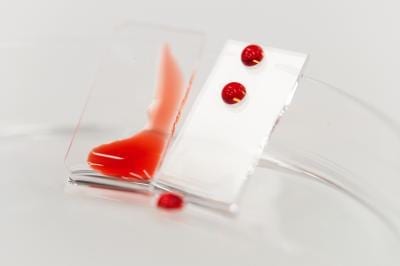
This eye disease often leads to blindness — which might be prevented by early intervention
The team headed by Dr. Jacqueline Reinhard and Prof. Dr. Andreas Faissner from the Department of Cell Morphology and Molecular Neurobiology in Bochum, together with colleagues from the University Eye Clinic in Bochum, RWTH Aachen University, the University of Toronto and the University of Denver, has published a report on their findings. The article was released on 12 October 2018 in the online edition of the journal Molecular Neurobiology.
Specific and early intervention
The researchers bred mice in which the gene PTP-Meg2 (protein tyrosine phosphatase megakaryocyte 2) was mutated . As a result, the animals suffered from chronic intraocular pressure elevation. The team successfully demonstrated that, in their model, the intraocular pressure elevation was associated with a loss of optic nerve fibres and retinal cells. Using functional analyses, they observed that retinal cells were unable to function properly, either. Moreover, they made the following discovery: glial cells and certain components of the immune system showed a reaction in the animals’ optic nerve and retina. As both aspects may be relevant for neurodegeneration, specific and early intervention into these cellular mechanisms may inhibit glaucoma.
Testing new therapy options
Making use of a genetic screening, the researchers subsequently identified new potential biomarkers. In future, these biomarkers may facilitate early detection of glaucoma; as a result, it will be possible to start therapy at an early stage, before the optic nerve and retina are damaged. The glaucoma-mouse model may, moreover, be used to test new therapy options. Experiments to date have shown that intraocular pressure was reduced and nerve cells were retained in the mice if they were given a drug that had been administered to treat human patients.
Learn more: Biomarkers facilitate early detection of glaucoma
The Latest on: Glaucoma
[google_news title=”” keyword=”glaucoma” num_posts=”10″ blurb_length=”0″ show_thumb=”left”]
via Google News
The Latest on: Glaucoma
- Content creator claims wearing sunglasses can harm your eyes. So, have we been wrong all this while?on May 2, 2024 at 3:00 am
“Sunglasses don’t protect your eyes, they actually do the opposite,” he cautions his followers. In the post, he continues to explain the reason behind this bold claim. “Human biology dictates that ...
- Questions About Dog Health? Veterinarians Have The Answer.on May 1, 2024 at 2:28 pm
Allergies, which can cause skin problems. This article discusses the common health concerns of Chihuahuas, including dental issues, low blood sugar, kneecap dislocation, heart problems, tracheal ...
- Ex-FBI informant charged with lying about Bidens must remain jailed, appeals court ruleson May 1, 2024 at 1:53 pm
A federal appeals court has rejected a bid to release from jail a former FBI informant who is charged with fabricating a multimillion-dollar bribery scheme involving President Joe Biden’s family ...
- Biden plans to drastically change federal rules on marijuana, here's where NC standson May 1, 2024 at 1:05 pm
Marijuana is currently federally scheduled in the same class as drugs like heroin and LSD, but sources say that this could change on a federal level. Here's what's happening and what it could mean for ...
- Want Green Eyes? That'll Be $12,000on May 1, 2024 at 6:01 am
Keratopigmentation, a procedure to permanently change one’s eye color that has been performed for at least a decade in Europe, is gaining popularity in the United States. Only a handful of clinics in ...
- Qlaris Bio Completes $24 Million Series B Financing Round to Advance QLS‑111, a First-in-class IOP-lowering Drug Candidate for Glaucomaon April 30, 2024 at 5:34 am
Qlaris Bio, Inc. (“Qlaris”), a clinical-stage biotechnology company targeting unmet needs in debilitating ophthalmic diseases, today announced that it has closed a $24 million Series B financing round ...
- Higher body mass index linked to slower rates of glaucoma progression: Studyon April 29, 2024 at 7:45 pm
A recent study from Duke University suggest that higher body mass index (BMI) may help slow the progression of glaucoma which is a leading cause of blindness. The key findings were published in ...
- ASCRS 2024: An update from ViaLase on its technology for a nonincisional approach to treating glaucoma.on April 29, 2024 at 3:58 pm
Rick Lewis, chief medical officer of ViaLase, describes the company's nonincisional glaucoma treatment, showing promising safety and efficacy in studies and possibly paving the way for FDA approval.
- Ophthalmologist runs second marathon for Glaucoma UKon April 29, 2024 at 1:07 am
In commemoration of Glaucoma UK’s 50 th anniversary, ophthalmic surgeon Michael Miller completed the London Marathon, three decades after completing the race the first time round. Miller was a trainee ...
via Bing News











